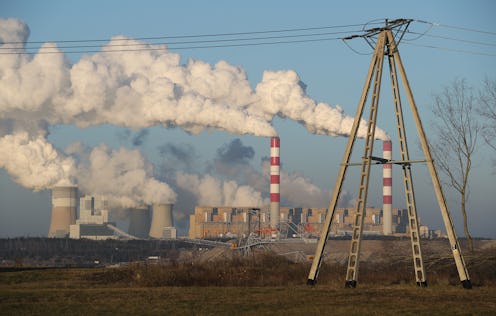Life
A New Study Shows An Unfair Reality About Who Is Most Affected By Air Pollution

The United States has a major pollution inequity problem. A new study shows that a significant racial gap exists between who creates the most air pollution, and who suffers most from air pollution. Published in the journal Proceedings of the National Academy of Sciences, the study’s authors say in the paper that while racial disparities in pollution exposure in the United States are well documented, this new research highlights how those disparities are linked to who buys the most consumer goods — and how this consumption contributes to pollution. Essentially, these findings show that Black and Hispanic communities create less air pollution than white people do, but they end up breathing in the bulk of it.
In order to better understand why — and how — these disparities exist, researchers from the University of Minnesota took a look at what consumer products and services create the most air pollution, CNN reported. Further, the study’s authors then analyzed what demographics use these goods the most, and where they live, in order to see who’s most exposed to contaminated air. By examining these various factors, researchers determined that there are stark differences between groups whose consumption habits spike air pollution, and communities who live in areas most impacted by it.
"Inequity in exposure to air pollution is well documented, but this study brings in the consumption angle,” epidemiologist Anjum Hajat, who did not help conduct the study, told Jonathan Lambert for NPR. The study reveals systemic racial inequities, Hajat said. “If you're contributing less to the problem, why do you have to suffer more from it?"
Study author Christopher Tessum of the University of Washington told Lambert that previous research never addressed the question as to who is consuming the most when it comes to products that escalate air pollution. "The different kinds of data, by themselves, aren't that complicated," Tessum said. "It's linking them where things get a little trickier."
After adjusting for differences in population sizes, researchers found that, even though white communities create the most in terms of air pollution through consumption of food and other products, they’re exposed to about 17 percent less air pollution, according to the study. Meanwhile, Black and Hispanic communities are exposed to 56 and 63 percent more consumer-driven air pollution, respectively — even though they consume far less.
“These patterns didn’t seem to be driven by different kinds of consumption,” Tessum told Lambert, “but different overall levels.” Meaning that white communities consume, on average, more consumer goods that contribute to air pollution than communities of color do.
Moreover, there are different kinds of air pollution, Willingham wrote for CNN. For this study, researchers examined what’s called "fine particulate matter," which is especially harmful for human health. These small particles can get into the lungs and bloodstream, and can cause life-threatening damage, wrote Willingham. After calculating ground-level pollution levels, and tracing them to different demographic areas, researchers found that higher amounts of fine particulate matter are found in black and Hispanic communities.
Living close to factories, freeways, and industrial centers raises the risks for exposure to air pollution, wrote Willingham. And due to a complex history of redlining (the practice of racist neighborhood planning) and class inequities, communities of color are left at risk of higher pollution exposure. Tessum advises that striving to make consumer good and services less toxic to the environment — and communities — could be a way to alleviate these inequities.
According to Willingham, researchers say that these findings may influence policy changes that can help lessen pollution damage for everyone. “Our analysis shows for the first time how pollution inequity is driven by differences among racial-ethnic groups in both exposure and the consumption that leads to emissions. Still, questions remain about the spatial context of pollution inequity, its underlying causes, how best to address it, and its generalizability," the study’s authors say in the paper.